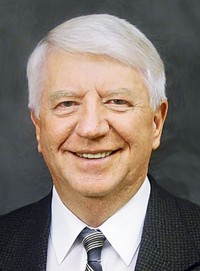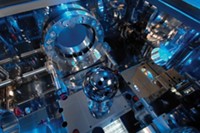Advertisement
Grab your lab coat. Let's get started
Welcome!
Welcome!
Create an account below to get 6 C&EN articles per month, receive newsletters and more - all free.
It seems this is your first time logging in online. Please enter the following information to continue.
As an ACS member you automatically get access to this site. All we need is few more details to create your reading experience.
Not you? Sign in with a different account.
Not you? Sign in with a different account.
ERROR 1
ERROR 1
ERROR 2
ERROR 2
ERROR 2
ERROR 2
ERROR 2
Password and Confirm password must match.
If you have an ACS member number, please enter it here so we can link this account to your membership. (optional)
ERROR 2
ACS values your privacy. By submitting your information, you are gaining access to C&EN and subscribing to our weekly newsletter. We use the information you provide to make your reading experience better, and we will never sell your data to third party members.
Analytical Chemistry
Check Your IQ On The SI
by Albert C. Censullo, Chair, Committee On Nomenclature, Terminology & Symbols
August 4, 2014
| A version of this story appeared in
Volume 92, Issue 31
The International System of Units—commonly abbreviated as SI from the French term Système International d’Unités—has served the scientific community well. It allows for standardization and uniformity of measurements across the world, and beyond. From the system’s earliest conception, standards for length, time, mass, and the other base units were sought, with the intention that such standards would be unchangeable and permanent. Over the past 100-plus years, however, scientific and technological advances have led to an evolution of standards, away from those originally envisioned by the authors of the system.
In fact, the International Committee for Weights & Measures is proposing a fairly dramatic revision of the entire SI system at this time.
To see how these changes will affect how we use and teach the SI system, consider this short quiz:
1. The current definition of the mole is
a. The amount of substance containing as many entities (atoms or molecules) as contained in exactly 12 g of 12C
b. The amount of substance containing 6.02214129 × 1023 entities (atoms or molecules)
c. The amount of substance such that Avogadro’s constant is exactly 6.02214129 × 1023 reciprocal mole
2. The current definition of the kilogram is
a. The mass of the international prototype of the kilogram (IPK, Pt-Ir cylinder)
b. The mass of 1 mole of 12C atoms, times 1,000/12
c. The mass such that Planck’s constant is exactly 6.62606957 × 10–34 J second
3. The proposed definition of the mole is
a. The amount of substance containing as many entities (atoms or molecules) as contained in exactly 12 g of 12C
b. The amount of substance containing 6.02214129 × 1023 entities (atoms or molecules)
c. The amount of substance such that Avogadro’s constant is exactly 6.02214129 × 1023 reciprocal mole
4. The proposed definition of the kilogram is
a. The mass of the international prototype of the kilogram (IPK, Pt-Ir cylinder
b. The mass of 1 mole of 12C atoms, times 1,000/12
c. The mass such that Planck’s constant is exactly 6.62606957 × w10–34 J second
You’ll find the answers to this quiz later in this article.
In the proposed revision of the SI, the definitions of the seven base units will rely on “explicit constant” rather than the more familiar “explicit unit” formulations. To understand the difference between these two formulations, consider two possible definitions for the meter:
Definition A: The meter is the unit of length that light travels in exactly 1/299,792,458 seconds.
Definition B: The meter is the unit of length such that the speed of light is exactly 299,792,458 meters/second.
Definition A, an explicit unit type, defines the unit length in terms of some distance, expressed in terms of the magnitude of a quantity of the same kind as the unit (length or distance, in this case).
Definition B, an explicit constant type, defines length by specifying a related constant, taken to be an invariant of nature. For this unit, the referenced constant is c, the speed of light in a vacuum. It does not describe how length may be determined experimentally, using the referenced constant. The idea is that the method by which such a measurement could be obtained will change as technology improves. This will not change the definition of the base unit.
The set of procedures required to realize the definition of the base unit is described by what is called the mise en pratique, a term that can be loosely translated as implementation. So the definition of a unit and its realization are viewed as separate things; the definition will remain unchanged (until the next revision of the SI, at least), whereas the mise en pratique is subject to periodic refinements and improvements.
Now, for the answers to the quiz: They are 1,a; 2,a; 3,c; 4,c. You may have a personal preference for the b set of answers. These are straightforward definitions, easy to understand, and easy to explain to students. However, these are not how units will be defined in the “new SI,” as currently proposed.
The ACS Committee on Nomenclature, Terminology & Symbols (NTS) has been keeping a close watch on developments in the new SI. To present information on these changes to ACS membership, and to allow for member input into the standards process, NTS is sponsoring a half-day symposium titled “Redefining the Mole and Kilogram: Impact on Chemistry” to be presented at the ACS fall national meeting in San Francisco. The symposium will take place from 8:30 AM until noon on Monday, Aug. 11, in room 133 of the Moscone Center, North Building. A group of five internationally recognized experts will share their knowledge about the new SI. The symposium will conclude with a panel discussion, affording interaction with ACS members. NTS hopes you will plan to attend this informative symposium.
Views expressed on this page are those of the author and not necessarily those of ACS.






Join the conversation
Contact the reporter
Submit a Letter to the Editor for publication
Engage with us on Twitter